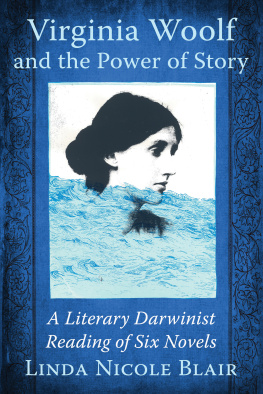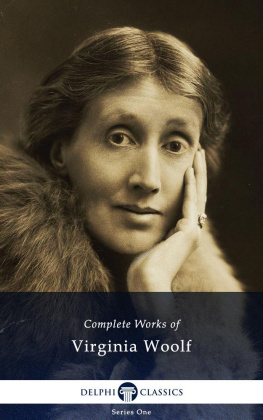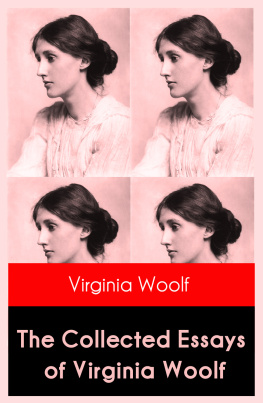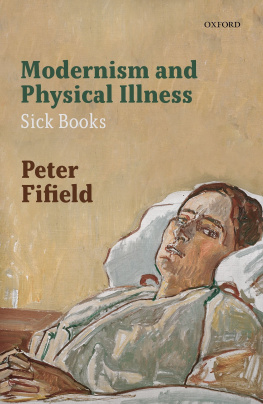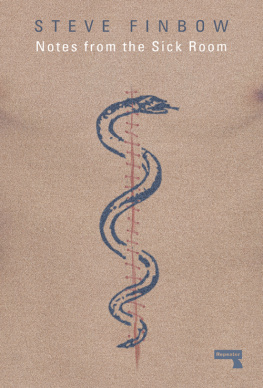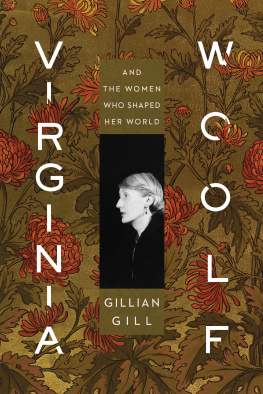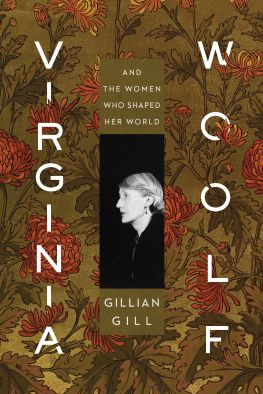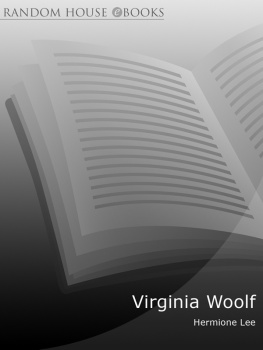ON BEING ILL
with
NOTES FROM SICK ROOMS

Wesleyan University Press
Middletown, CT 06459
www.wesleyan.edu/wespress
On Being Ill 2002, 2012 The Estate of Virginia Woolf
Introduction to On Being Ill 2002 Hermione Lee
Notes from Sick Rooms 2012 Paris Press
Introduction to Notes from Sick Rooms 2012 Mark Hussey
Afterword 2012 Rita Charon
All rights reserved
Originally published by Paris Press in 2002 and in an expanded edition in 2012
First Wesleyan University Press edition 2021
Ebook ISBN 978-0-8195-8091-7
Manufactured in the United States of America
5 4 3 2 1
Front cover and interior art by Vanessa Bell, reproduced with permission from The Estate of Vanessa Bell. Back cover photograph of Julia Stephen with Virginia Woolf, platinum print by Henry H. H. Cameron, 1884. Courtesy of The Mortimer Rare Book Room, Smith College.
On Being Ill was first published as an individual volume in 1930 by The Hogarth Press.
Interior photograph of Julia Stephen at the Bear, Grindelwald, Switzerland, silver print by Gabriel Loppe, 1889.
Reprinted courtesy of the Mortimer Rare Book Room, Smith College.
Notes from Sick Rooms was first published by Smith, Elder & Co., London, 1883.
The information contained in this book is for informational purposes only and is never intended to be a substitute for professional medical advice, diagnosis, or treatment.
Library of Congress Cataloging-in-Publication Data
Woolf, Virginia, 1882-1941.
On being ill / by Virginia Woolf ; with Notes from sick rooms by Julia Stephen ; introduction by Hermione Lee and Mark Hussey ; afterword by Rita Charon, MD.
p. cm.
ISBN 978-1-930464-13-1 (pbk. : alk. paper)
1. Woolf, Virginia, 1882-1941Health. 2. DiseasesPsychological aspects. 3. Sick in literature. 4. SickPsychology. I. Lee, Hermione. II. Hussey, Mark, 1956- . III. Charon, Rita. IV. Stephen, Julia Prinsep, 1846-1895. Notes from sick rooms. V. Title.
PR6045.O72O5 2012
823.912dc23
[B]
2012031389
CONTENTS
by Hermione Lee
by Virginia Woolf
by Mark Hussey
by Julia Stephen
by Rita Charon
PUBLISHERS NOTE
I T IS WITH tremendous pride that Paris Press brings our 10th Anniversary Edition of On Being Ill into print with Notes from Sick Rooms by Julia Stephen, originally published in 1883. Combining the voices of daughter and mother in the body of this book is truly thrilling. It offers a unique textual conversation between patient (Virginia) and care giver (Julia) and invites a new understanding of Virginia Woolfs writing and life through this little-known book by Julia Stephen. Presenting both texts together also provides a useful guide for care givers and individuals in the medical field to accompany Virginia Woolfs extraordinary essay about the transformational effects of illness in a world that often pushes this universal experience deep into the shadows.
Reading these very different books side by side imparts a thread of intimacy that I am sure neither Virginia nor Julia would have imagined in their hours of writing. Echoes between On Being Ill and Notes from Sick Rooms in subject and tone present an interior family resemblance that mirrors the uncanny similarities of their physical appearance. The texts proximity also suggests a source for the maternal longing that Woolf expresses in her writing.
In this new edition, Hermione Lees original, expansive essay about On Being III and the life and work of Virginia Woolf appears intact and is as poignant as it was a decade ago. Mark Husseys Introduction to Notes from Sick Rooms offers profound observations of the world of illness that both Julia and Virginia inhabited, and presents Virginia Woolf, her publications, and On Being III in the context of Julia Stephens life and writing. Concluding this edition is an Afterword by Rita Charon, physician, scholar, and founder and director of Columbia Universitys Program in Narrative Medicine. Readers might happily begin the book at the end, or start it here, at the beginning. The Afterword crystallizes elements from On Being III and Notes from Sick Rooms, examining the texts as literary works as well as expressions that reflect the broader experience of patient and medical practitioner.
Paris Press offers deepest thanks to the Estate of Virginia Woolf and the Society of Authors as the Literary Representative for permission to publish this long-neglected essay. We owe immense thanks to Henrietta Garnett and the Estate of Vanessa Bell for permission to reproduce Vanessa Bells original 1930 cover art from The Hogarth Press publication of this work. Thank you Karen Kukil for assistance with both editions, and for the inspiring conversation that sparked the research that led to the original publication of On Being Ill. We offer gratitude to the memory of Marc Comras, to Eva Schocken, Margery Adams, Emily Wojcik, Hans Teensma, Anne Leiby, Janlori Goldman, Linda Weidemann, the Massachusetts Cultural Council, and the generous supporters, interns, volunteers, and assistants who made the publication of this book possible. Special thanks to Michael Russem and Claudia Cohen for the letterpress, hand-bound limited edition of On Being Ill (available through Paris Press), and to the Mortimer Rare Book Room at Smith College.
I am indebted to Mark Hussey for making me aware of Julia Stephens Notes from Sick Rooms and to Janlori Goldman for strongly urging Paris Press to include this text in the new edition. Immense thanks to Hermione Lee, Mark Hussey, and Rita Charon for their contributions to this edition, and special thanks to Michele Wick and Janlori Goldman for the online Study and Readers Guide. Gratitude to Don Joint for his thoughtful and beautiful cover-art collage, which refers to Virginia Woolfs life and to Vanessa Bells original cover art for On Being Ill.
When I first read On Being Ill, it resonated fiercely on a personal front. In the months that followed, I found myself in numerous conversations with people in the midst of common as well as acute illnesses. The same has happened with Notes from Sick Rooms. Julia Stephens useful and detailed instructions on caring for the sick have proved immensely helpful when visiting friends who are critically ill. The marked exceptions are in the Food and Remedies sections, which include information specific for treating illness during the late 19th century, and should not be attempted today.
Paris Press dedicates this 10th Anniversary Edition to Eleanor Lazarus. It is my hope and the hope of Paris Press that Virginia Woolfs profound observations, along with the guidance of her mother, Julia Stephen, will offer comfort and affirmation to all people experiencing the transformations induced by illness while the army of the upright marches healthily by.
J AN F REEMAN
A UGUST 25, 2012
ON BEING ILL
INTRODUCTION
O N B EING I LL , one of Virginia Woolfs most daring, strange, and original essays, has more subjects than its title suggests. Like the clouds which its sick watcher, lying recumbent, sees changing shapes and ringing curtains up and down, this is a shape-changing essay, unpredictably metamorphosing through different performances. It treats not only illness, but language, religion, sympathy, solitude, and reading. Close to its surface are thoughts on madness, suicide, and the afterlife. For good measure, it throws in dentists, American literature, electricity, an organ grinder and a giant tortoise, the cinema, the coming ice age, worms, snakes and mice, Chinese readers of Shakespeare, housemaids brooms swimming down the River Solent, and the entire life-story of the third Marchioness of Waterford. And, hiding behind the essay, is a love-affair, a literary quarrel, and a great novel in the making. This net or web (one of the key images here) of subjects comes together in an essay which is at once autobiography, social satire, literary analysis, and an experiment in image-making. By its sleight-of-hand and playfulness, and its appearance of having all the space and leisure in the world for allusion and deviation, it gallantly makes light of dark and painful experiences.




